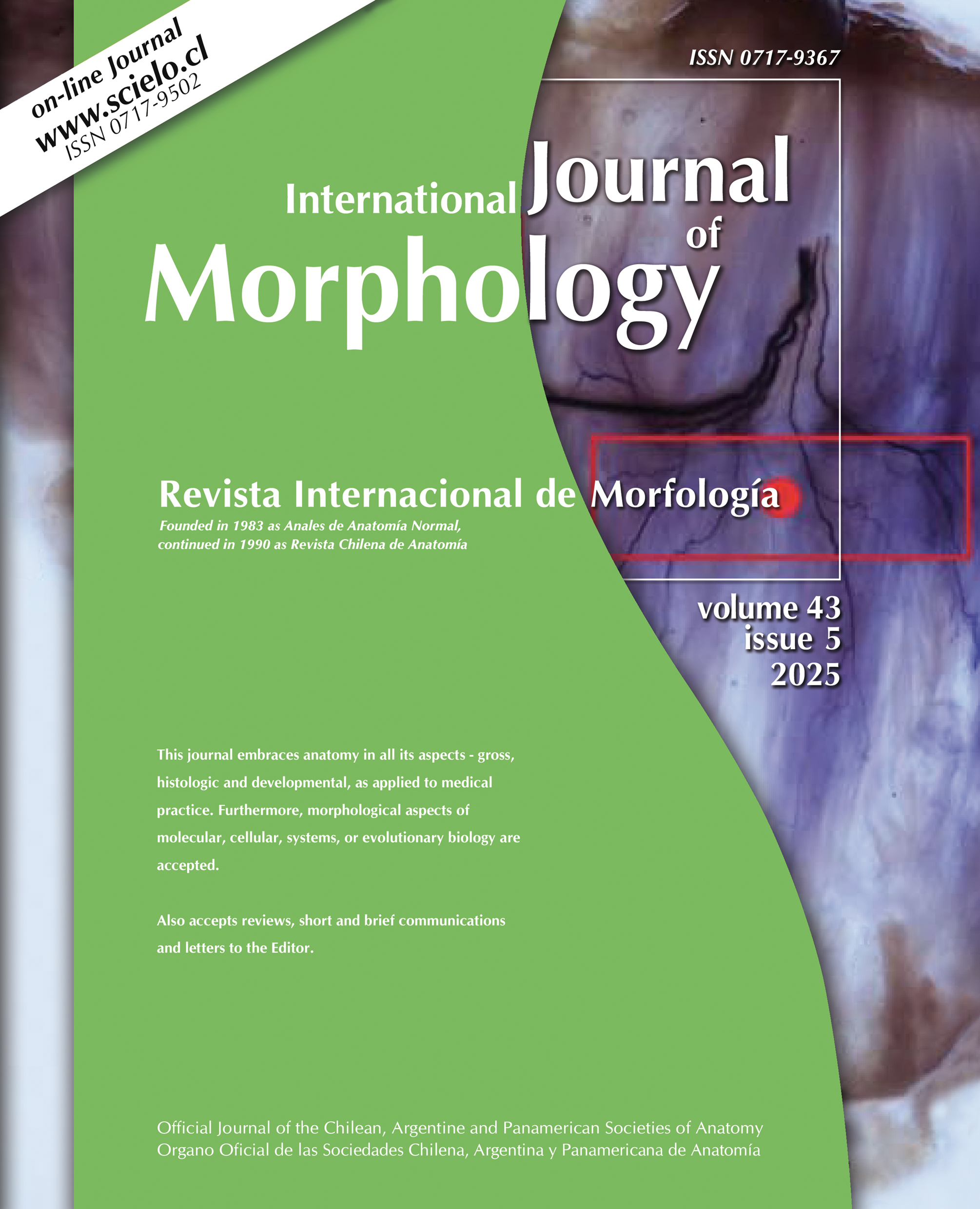Neuroanatomy of Two Species of Genus Myliobatis (Chondrichthyes: Myliobatoidea)
DOI :
Héctor Marcos Montes-Domínguez; Luis Amado AyalaPérez; Manuel Arnoldo Castillo Rivera; Mónica González Isáis & Víctor Hugo Reynoso
Summary
Several studies on the elasmobranchs neuroanatomy have shown that their brain is more complex than previously thought, and had significant intra and interspecific variations. The objective of this work was conducting a comparative encephalic neuroanatomy study of two species of genus Myliobatis. In total, 16 organisms of genera Myliobatis californica and Myliobatis longirostris, collected in the coasts of Kino Bay, Sonora, Mexico, were used. In Myliobatis, the brain has a long telencephalon and the posterior central nucleus is poorly developed. Their cerebellum is asymmetric, has several sulci, most of which are transversally oriented, with four lobes (anterior, medium and two posterior), a condition which has not been reported for any other species. It was observed that, despite the morphology of M. californica and M. longirostris is similar, there are some significant differences. Both species have moderate foliation, but M. californica has more sulci. In the diencephalon of M. californica, it was observed that the lobes of the infundibulum are oval-shaped and separated, while in M. longirostris, such lobes are rounded and near the medium line. It has to be highlighted that Myliobatis belongs to the most derived batoid group; nevertheless, its brain is considerably less complex, as compared to what has been reported for the most derived milyobatoids species.KEY WORDS: Elasmobranchii; Myliobatis; Gross brain; Telencephalon; Cerebellum.





























